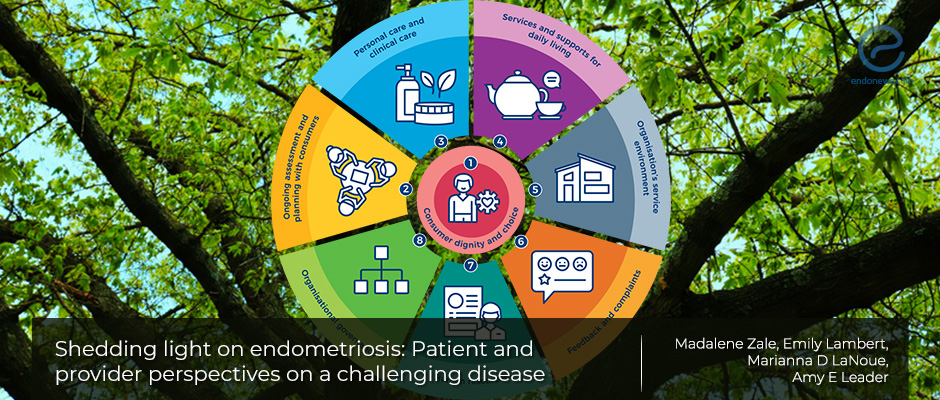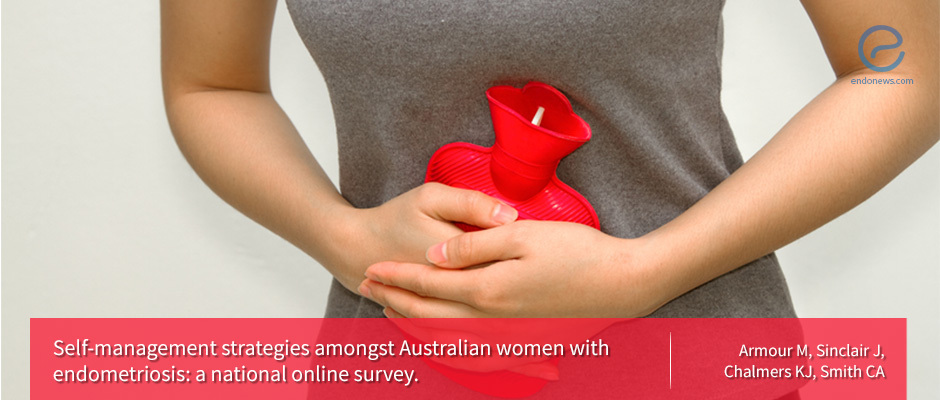 Demet Candaş Green
Demet Candaş Green
Demet is an editorial coordinator at the University of California, Davis (UC Davis) responsible for editing and reviewing scientific elements of grant proposals. She holds a BS and an MS degree in Molecular Biology and Genetics from Boğaziçi University, Turkey; and a PhD in Biochemistry and Molecular Biology from UC Davis. She trained as a post-doctoral scholar at the UC Davis Comprehensive Cancer Center before she launched a career as a scientific editor.
How well do providers understand endometriosis?
Endometriosis is a challenging disease no matter what side of the equation you are in, a patient or a provider who cares for patients with the disease. It impacts millions of women worldwide, making it one of the most prevalent diseases in the gynecology field. Yet, it is often misdiagnosed or diagnosis is delayed, which then results in unnecessary or inefficient medical interventions, and burdens the patients as well as the healthcare systems. The purpose of this study was to…
Key Points Lay SummaryWoman at reproductive age suffering from migraines should consider getting evaluated for endometriosis.
What do migraine and endometriosis have in common? One can easily answer “pain”. Turns out there are other shared aspects when it comes to these two conditions: both have a high prevalence in women of childbearing age, both suffer from delayed diagnosis and treatment, and they generally have major socio-economic repercussions. They also show similarities in the underlying pathological mechanisms, which involve hormonal influence and chronic inflammation for both conditions. There have been studies in the past showing a higher…
Key Points Lay SummaryIs deep infiltrating rectosigmoid endometriosis a progressive disease?
This study by Netter at al., published in "Human Reproduction" in November 2019 aimed to assess the risk of progression of deep endometriotic nodules infiltrating the rectosigmoid and to evaluate the influence of continuous amenorrhoea (absence of menstruation) on the development of the nodules. The authors conducted a retrospective study on patients with rectosigmoid endometriosis who had not undergone surgical management and had successive pelvic MRI examinations to follow the natural evolution of deep infiltrative lesions. Currently, there are no definitive…
Key Points Lay SummaryEndometriosis is linked with the most common autoimmune diseases
How endometriosis develops is not completely clear, but the involvement of the immune system has been heavily suggested. Women with endometriosis share some common autoimmune disorders, therefore, a potential link between autoimmune diseases and endometriosis has been investigated over the last 20 years, but the available data are conflicting. To provide a new insights into the possible connection between endometriosis and the autoimmune diseases, this study by Porpora et al., from Benedetti Panici group, investigated the prevalence of some of the most frequent…
Key Points Lay SummaryUsing social media to raise awareness for endometriosis
Raise your hand if you have used internet or social media to search for information today. We all do, every single day. Whether it is a recipe, biography of a favorite singer, reviews of a new restaurant, or today’s weather, we increasingly rely on the internet and social media for information and support. Literature shows that 80% of internet users search for health-related information such as physicians, healthcare providers, and symptoms and treatment options for diseases. In 2016, Facebook reported…
Key Points Lay SummaryImpact of hemostatic techniques used in endometrioma surgery on ovarian function
This publication reports on an ongoing clinical trial that aims to assess whether the hemostatic techniques (methods to stop bleeding) used in ovarian endometrioma surgery have damaging effects on ovarian function. The clinical trial stemmed from a multitude of inconclusive studies suggesting some hemostatic methods may result in reduced ovarian reserves; while other studies suggest the damage to ovarian reserves are a natural result of having the disease itself. Given the laparoscopic surgery is the gold standard for the treatment…
Key Points Lay SummaryPregnancy with endometriosis
Current literature suggests that complications of endometriosis during pregnancy are rare; however, a non-negligible increase in the likelihood of placenta accreta (placenta grows too deeply into the uterine wall), preterm birth, and cesarean delivery has been reported. With the increase in the pregnancy rates in women with endometriosis, it became integral to fully understand any possible effects of endometriosis on pregnant women and newborns. This recent study by Dr. Uccella and colleagues focused on this very concern: Maternal and neonatal outcomes…
Key Points Lay SummaryMRI or TVS for accurate diagnosis of rectosigmoid endometriosis?
Rectosigmoid endometriosis (RE) is seen in about 90% of patients with bowel endometriosis. Rectosigmoid is the region between the rectum and the sigmoid colon, which is a region easily accessed and assessed by two most common noninvasive imaging modalities – transvaginal sonography (TVS) or magnetic resonance imaging (MRI). Either method was found, by this study, highly accurate for noninvasive diagnosis and pre-operative mapping of RE. Noninvasive means of diagnosis is treasured by patients with deep endometriosis, as they generally go…
Key Points Lay SummarySurgical treatment of deeply infiltrating endometriosis in tertiary treatment centers
In the present study, data from patients who were surgically treated for deep infiltrating endometriosis (DIE) in a tertiary referral unit, the Avicenna Centre for Endometriosis and Minimally Invasive Gynecology (ACEMIG, Tehran, Iran), were examined for rates of intraoperative and postoperative complications. This observational study included 244 women, aged 15–55, who underwent laparoscopic surgery to DIE at ACEMIG between September 2013 and August 2016. "ACEMIG" is one of the very few referral centers for women with severe endometriosis in Iran…
Key Points Lay SummaryEndocrine-disrupting chemicals – yet another environmental factor associated with endometriosis?
This study by Wen et al., published in Gynecological Endocrinology, analyzed evidence connecting endocrine-disrupting chemicals (EDCs) to the incidence of endometriosis in a collection of 30 previously published studies. Results show that exposure to many EDC's are linked to the risk of endometriosis. However, the number of studies (30) is quite small for accurate conclusions. Well-designed epidemiology studies can confirm this suspected linkage. EDCs are substances in our environment, food or consumer products that induce hormone dysregulation in humans or…
Key Points Lay SummaryBladder Endometriosis
Bladder endometriosis is rare – about 1-2% of women with endometriosis may have endometrial lesions in their urinary tract. Diagnosis of bladder endometriosis is difficult because of its nonspecific symptoms such as frequent urination, pelvic pain, and burning sensation when urinating, which are also symptoms of ever so common cystitis. This recent study by Gonçalves et al., published in "Surgical Technology International" in March 2019 analyzed the available data from patients with bladder endometriosis with a goal of understanding the…
Key Points Lay SummaryCan early-life exposures affect endometriosis development later in life?
Endometriosis is a complex disease with possible multifactor contributors. So far, inflammatory, immunogenic, genetic, and environmental factors have all been associated with endometriosis. In addition, it is possible that different types of endometriosis lesions – peritoneal, ovarian, and deep infiltrating – may all have different origins and pathogenic mechanisms. A recent multi-country study called FEELING (Factors associated with the development of Endometrioma and dEep infiltratING endometriosis) investigated the clinical, lifestyle, and environmental factors associated with all three subtypes of endometriosis…
Key Points Lay SummaryGal-3 can be a pharmacological target in endometriosis treatment
Galectins are known to play a significant role in angiogenesis, which is a key event contributing to the development of many disease conditions, one of which is endometriosis. Past studies, upon examining several human endometriotic lesions, showed that Galectin-3 (Gal-3) was overexpressed in the endometrium of women with endometriosis compared to that of women without endometriosis; and in peritoneal as well as deep infiltrating endometriotic lesions. These findings formed the basis of the current study, which investigated a possible role…
Key Points Lay SummarySelf-management of endometriosis symptoms: from Australia
Effective self-management techniques and lifestyle changes may play an important role in the management of endometriosis symptoms by many women. Due to various reasons such as limited effectiveness of some medications, potential side effects, availability of medical resources, self-desire to take more control over own health; many women might turn to self-care strategies for management of their endometriosis symptoms. This study by Armour et al. aimed to determine the kinds of self-management strategies used by women with endometriosis. By surveying…
Key Points Lay SummaryBowel endometriosis: What you need to know
When the endometrial tissue infiltrates the intestinal walls and reaches inside the intestines, this condition is called "bowel endometriosis". It is estimated that between 3.8% and 37% of women with endometriosis are affected by bowel endometriosis. The endometriosis lesions infiltrating intestines can have different characteristics such as the number and size, how deeply the intestinal wall is infiltrated, and what percentage of the intestines are affected. All of these characteristics contribute to the symptoms observed and treatment strategies adopted. While…
Key Points Lay SummaryHOXA-10 levels are related to infertility in endometriosis patients
The current study by Ozcan et al., published in the European Journal of Obstetrics & Gynecology and Reproductive Biology aimed to investigate the levels of HOXA-10 gene in fertile versus infertile women with endometriosis. HOXA-10 protein (expressed by HOXA-10 gene) is normally elevated in human endometrium during implantation and its levels increase dramatically during the mid-secretory phase of the menstrual cycle, which roughly corresponds to Day18 to Day25 of a normal menstrual cycle. According to the present study, the HOXA-10 levels…
Key Points Lay SummaryThe effect of endometriosis on preterm birth risk
Some studies show that women with endometriosis develop significant complications during pregnancy that lead to preterm labor, and newborns of these women often need neonatal intensive care unit admissions. However, other studies argue that endometriosis have no significant effect on pregnancy outcomes. This current study by Perez-Lopez et al. aimed to evaluate the association between endometriosis and preterm birth risk in pregnant women with endometriosis either spontaneously conceived or used ART. Also studied are several secondary outcomes such as the…
Key Points Lay SummaryDoes asthma increase the risk of endometriosis?
Previous studies have shown an association between asthma and endometriosis but with inconsistency. It is still unclear whether women who have asthma are at a higher risk of endometriosis than women without asthma symptoms. Peng et al., conducted a large nationwide retrospective study, studied data from Taiwan National Health Insurance Database identified 7,337 women aged 12-50 years with newly diagnosed asthma or using asthma medications, and 29,348 age-matched women without asthma in an attempt to investigate the association between asthma…
Key Points Lay SummaryBody Mass Index and IVF outcomes in non-obese endometriosis patients
Endometriosis and body mass index (BMI) are inversely related, meaning obese women are at a lower risk of developing endometriosis. Similarly, women with lower BMI are considered high risk for severe types of endometriosis. The severity of endometriosis brings about lower reproductive chances. All of these facts indicate higher BMI among women with endometriosis may lead to an increased reproductive outcome in these patients. Garalejic et al. investigated the effect of BMI on in vitro fertilization (IVF) outcomes in endometriosis…
Key Points Lay SummaryCan grapefruits and oranges be used for treatment of endometriosis?
Naringenin is a plant-based nutrient found abundantly in grapefruits and oranges with well-known anti-cancer, anti-inflammatory, and anti-oxidant properties. Previous studies showed that naringenin could modify the estrogen receptor signaling, suggesting a role for naringenin in endometriosis. The current study performed by Park et al., from College of Life Sciences and Biotechnology, Korea University, Seoul, aimed to investigate whether naringenin affects the viability of endometriosis cells, and identify the signaling molecules that mediate naringenin’s effects on these cells. The authors utilized several techniques…
Key Points Lay Summary


















